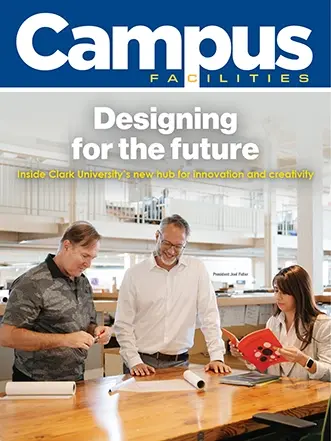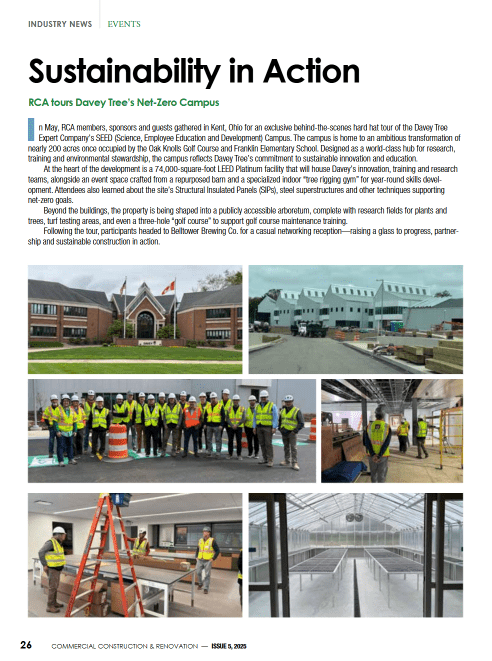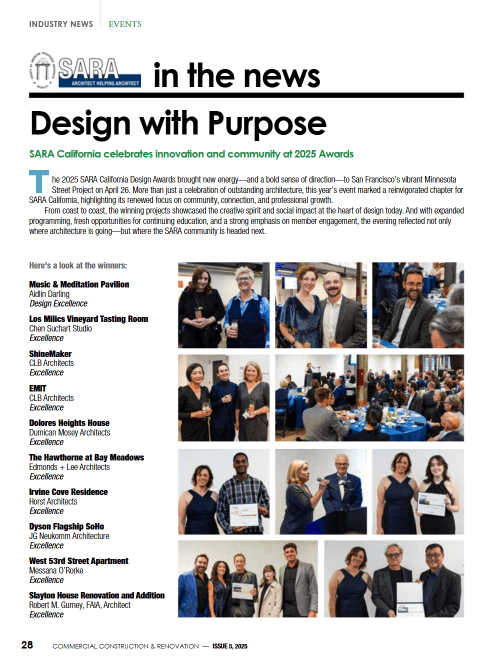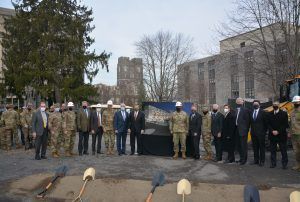 James Gagliano has carried a valuable lesson with him that he learned 37 years ago as a cadet at the US Military Academy at West Point, New York. One of the most lasting and indelible images he has retained since his graduation involves a crusty, old senior, non-commissioned officer and Vietnam War veteran who taught Military Science. The lesson he imparted on his students: “Generals always fight the last war.”
James Gagliano has carried a valuable lesson with him that he learned 37 years ago as a cadet at the US Military Academy at West Point, New York. One of the most lasting and indelible images he has retained since his graduation involves a crusty, old senior, non-commissioned officer and Vietnam War veteran who taught Military Science. The lesson he imparted on his students: “Generals always fight the last war.”
This means that military strategy often focuses on what has happened rather than what will happen. The warning has remained with Gagliano across his military and law enforcement careers. “I learned that you have to anticipate what could happen and that imagination and daring are essential leader traits,” says Gagliano, who has served as a counterterrorism operator in Afghanistan and as part of the Federal Bureau of Investigations’ (FBI) elite counterterror unit.
Like Gagliano, the academy also is anticipating what could happen next for its cadets. Working with the US Army Corps of Engineers, New York District, the academy will begin construction on a Cyber Engineering & Academic Center that will help prepare cadets for what comes next.
When completed, the center will replace outdated facilities at the academy and will be used by instructors to provide cadets hands-on core courses in science, technology, engineering and math. The structure will have large, open workspaces where cadets and faculty, from different disciplines, can collaborate. In addition, the space will enable them to grapple with cutting-edge technology and equipment, and creatively and critically tackle complex problems.
The center’s goal is to inspire the cadets, ignite innovation and develop them into the technically-competent leaders who are needed for the battlefield of 2030.
The center is one of many structures the Army Corps of Engineers has constructed on the 200-year-old campus, which is 50 miles north of New York City on the Hudson River. The 136,000 square-foot world class academic facility will sit on five acres of land near the south entrance of the campus, and other academic buildings and dormitories.
Silas Bowman, project manager, New York District, US Army Corps of Engineers, says the center will be the first thing new students and their families see as they enter West Point. “The center will be the gateway to the academic center of West Point and will stand out as a beacon of gothic beauty on the exterior and the forefront of technology on the inside.”
Being an educator himself, Gagliano can appreciate a new center like this for the cadets. An adjunct professor and doctoral candidate, he educates the public as an on-air cable news subject-matter analyst on law enforcement and counter terrorism. “The 21st Century battlefield is complex and amorphous, which demands that our military leaders have a clear understanding of emergent threats and process intelligence in terms of how we can dominate the nebulous realm of asymmetrical warfare.”
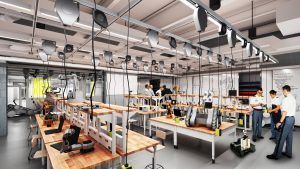 A peek inside
A peek inside
The Cyber Engineering & Academic Center will feature four floors, a multi-story underground parking garage and a walkway connecting the center to an adjacent academic building. It also will house the engineering department with classrooms for instruction on civil, mechanical, electrical and cyber engineering.
In addition, the Center will house laboratories for instruction on topics, including thermodynamics, biomechanics, weapons, photonics, telecom, computer, sensors, artificial intelligence, and environmental and energy sustainability.
Keeping up with the technological advancements pacing the landscape, the Center also will enable cadets to receive training on robotics and drones, along with having a Robotics High-Bay Lab to allow indoor drone flight and robotics use.
When visitors enter the Center, they will be welcomed by a three-story light-filled atrium. The atrium will be the hub of the center and will be surrounded by glass walls, providing visitors a window view into the Robotics High-Bay Lab.
The Center’s atrium entrance and the entire fourth floor will serve as collaboration space. The fourth floor—with views of the Hudson River—will provide collaboration space, and a setting for notable speakers and dignitaries to give presentations and hold meetings with access to high tech audio-visual equipment.
“I cannot help but see the parallels between the old Thayer riding hall—where cadets used to be trained in equine warfare—and the modern-day, high-bay lab for drones and robotics testing,” Gagliano says. “West Point must stay abreast of evolving technologies and training opportunities for the young men and women who will be leading our next generation of American warfighters. Just as cadets like George Armstrong Custer (c/o 1861) trained in equine warfare—horsemanship and cavalry operations—in the footprint that is Thayer Hall during the Civil War era, cadets today are being exposed to robotics and drones, their own version of ‘saddle skills.’”
Gagliano says that successful interdiction “left of boom” requires cutting-edge technological innovations for data collection, intelligence gathering and weapons delivery. “Drones are the answer. They are as necessary and ubiquitous today as pack horses were during 19th Century warfighting.”
“Left of boom” refers to the moments before an explosion or attack—a period when you still have time to prepare and avert a crisis. Part of being prepared for left of boom moments is being able to work with others across disciplines. Collaboration among cadets and faculty will be encouraged and the Center will be designed to facilitate this.
To further encourage collaboration, a 30-feet wide pedestrian enclosed bridge with an exterior rooftop will connect the center to Mahan Hall and span over Thayer Walk, the main pedestrian access way on the campus. The bridge will not only provide an iconic entrance to the academy, but will encourage collaboration between the buildings.
While the inside of the Center will have the latest technology, the outside will pay respect to West Point’s past. “The Center will have the same gray and black granite exterior as the other historic buildings on the campus and will reflect the historic military gothic revival architecture of West Point with arches, buttresses and a granite façade, while the interior is high tech and modern,” Bowman says.
Modern also means the building will be energy-efficient and designed for Leadership in Energy and Environmental Design (LEED) Silver certified. To meet this certification, the Center will have high volume—low velocity fans in the Robotics High-Bay Lab and there will be solar panels on the roof.
 Construction on the Center is expected to be completed in summer 2025. The US Army Corps of Engineers sees this new academic center as an important way to protect our Nation. “The 21st Century battlefield is complex and demands that our cadets and future military leaders process emergent threats, including cyber intelligence warfare,” says Lt. Gen. Scott Spellmon, 55th Chief of Engineers. “I believe this complex will continue to provide additional resources in helping them learn to safeguard our Nation’s interests. This modern academic facility will inspire collaboration across engineering disciplines in a way that can’t be achieved in the current 1960s-style building space.”
Construction on the Center is expected to be completed in summer 2025. The US Army Corps of Engineers sees this new academic center as an important way to protect our Nation. “The 21st Century battlefield is complex and demands that our cadets and future military leaders process emergent threats, including cyber intelligence warfare,” says Lt. Gen. Scott Spellmon, 55th Chief of Engineers. “I believe this complex will continue to provide additional resources in helping them learn to safeguard our Nation’s interests. This modern academic facility will inspire collaboration across engineering disciplines in a way that can’t be achieved in the current 1960s-style building space.”
When Gagliano was asked why this Center is important for US citizens, he says the modern battlefield, where military and civilian lives remain at stake and every action is consequential, is not the arena to test these systems and platforms. “Make your mistakes and retreat to the drawing board during testing and train-ups. Or as Gen. Norman Schwarzkopf’s adage goes, “The more you sweat in peace, the less you bleed in war.”
Dr. JoAnne Castagna is a Public Affairs Specialist and Writer for the U.S. Army Corps of Engineers, New York District. She can be reached at joanne.castagna@usace.army.mil.













